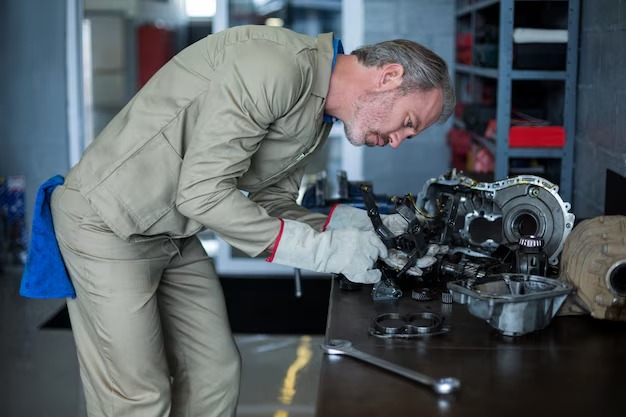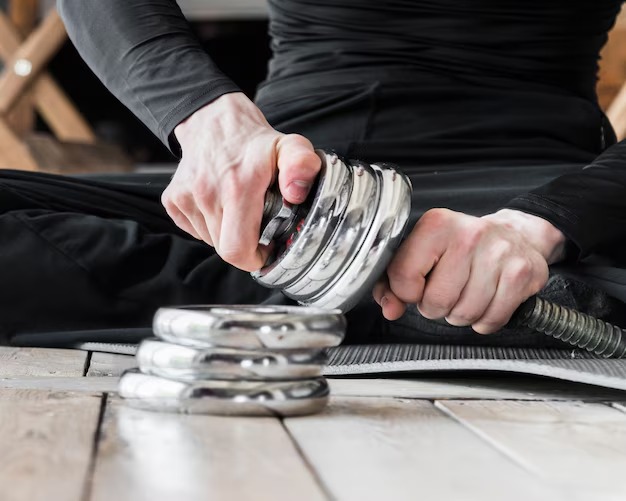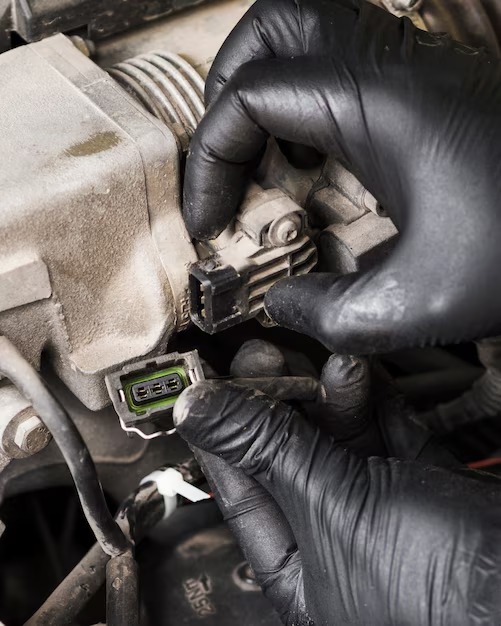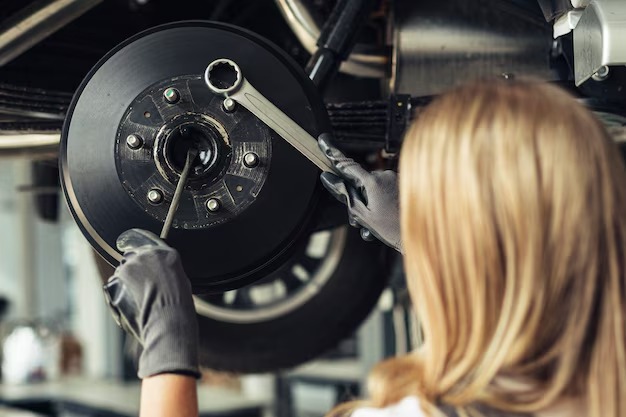Hardest Cars to Work On
Every car enthusiast knows that the automotive industry is an intricate web of engineering marvels and mechanical puzzles. Behind every roaring engine lies a labyrinth of components, each with its own set of challenges for even the most experienced mechanic to unravel. Today, we delve into the realm of automotive enigmas and take a closer look at the ten most perplexing vehicles that have left mechanics scratching their heads.
In a realm where complexity reigns supreme, these formidable machines pose a test of skill and expertise like no other. From their sophisticated systems to their intricate designs, each car on this list carries a level of intricacy that can daunt even the most seasoned professionals. The mechanics who undertake the repair and maintenance of these automotive conundrums must possess both innovation and resilience, for they are faced with a puzzle that demands a unique approach and an unwavering determination.
As they enter the world of these mechanical enigmas, mechanics find themselves encountering a multitude of intricate circuits, meticulously arranged parts, and complex computerized systems. The very fabric of these vehicles seems to defy conventional understanding, demanding an almost instinctive understanding of their inner workings. Whether it’s disentangling the intricate wiring of an electrical system or interpreting the cryptic messages of an onboard computer, mechanics face a relentless challenge that demands a combination of technical knowledge, problem-solving finesse, and sheer perseverance.
Complex Electrical Systems: A Nightmare for Mechanics
Modern vehicles are equipped with highly intricate and sophisticated electrical systems, presenting a considerable challenge for mechanics. These complex electrical systems have become a nightmare for professionals in the automotive repair industry, requiring extensive knowledge, specialized tools, and meticulous troubleshooting skills to diagnose and fix electrical issues.
1. Advanced Electronic Control Units
One of the primary components contributing to the complexity of modern car electrical systems is the proliferation of advanced electronic control units (ECUs). These small computers control various functions such as engine management, transmission, brakes, and entertainment systems. With multiple ECUs interconnected and relying on intricate wiring harnesses, diagnosing and repairing faults can be a daunting task.
2. Multiplex Wiring Systems
Unlike traditional wiring systems, modern vehicles often employ multiplex wiring systems, where multiple signals are transmitted over a single wire. This innovative approach reduces the amount of wiring required but complicates troubleshooting efforts for mechanics. Identifying and isolating malfunctioning components within a multiplex system requires specialized diagnostic tools and an in-depth understanding of the intricate network.
Moreover, the increasing integration of advanced features like touchscreens, GPS navigation, and wireless connectivity places additional strain on the electrical system. Mechanics must keep up with the ever-evolving technology and possess the necessary expertise to handle these complex systems.
3. Diagnostic Challenges
Diagnosing electrical problems in modern vehicles often involves intricate diagnostic procedures, as faults could be caused by a multitude of factors. Mechanics need to utilize sophisticated diagnostic equipment to pinpoint the root causes accurately. Unlike traditional mechanical repairs, where issues are usually visible or can be detected through physical inspection, electrical problems often require in-depth analysis and testing.
In addition to the technical challenges, mechanics also need to stay up-to-date with the rapidly evolving automotive technology. Continuous training and education are essential to understand the intricacies of the complex electrical systems found in modern cars.
- Interconnected electronic control units (ECUs)
- Multiplex wiring systems
- Advanced features demanding expertise
- Intricate diagnostic procedures
- Rapidly evolving technology
In conclusion, the complexity of modern car electrical systems poses a significant challenge for mechanics. The advent of advanced ECUs, multiplex wiring systems, and the integration of sophisticated features has turned electrical repairs into a nightmare. Mechanics must possess extensive knowledge, specialized tools, and the ability to navigate through intricate diagnostic procedures in order to effectively repair and maintain these complex electrical systems.
Unconventional Engine Layouts: A Puzzle to Solve
Exploring the realm of automobile engineering unveils a fascinating puzzle: unconventional engine layouts. These non-traditional arrangements present mechanics with unique challenges that demand their utmost skills and problem-solving abilities. Here, we delve into the intriguing world of these unusual engine configurations and the intricate puzzles they create for mechanics.
1. Non-standard Cylinder Orientation
- Horizontal inline
- V-shaped
- Radial
2. Unconventional Cooling Systems
- Air-cooled engines
- Waterless cooling systems
- Hybrid cooling methods
3. Unique Placement of Engine Components
- Mid-engine layouts
- Rear-engine configurations
- Triangular engine placement
4. Advanced Hybrid Powertrains
- Series-parallel hybrid systems
- Through-the-road hybrid layouts
- Modified engine and electric motor arrangements
In their pursuit to enhance performance, efficiency, and design, automakers have embraced these unconventional engine layouts. Handling these puzzles requires mechanics to possess a deep understanding of the intricacies involved, ensuring precision and expertise in their repairs. Solving these puzzles becomes a testament to the skills and adaptability of mechanics in the ever-evolving automotive industry.
Limited Accessibility: Mechanics’ Struggle to Reach Components
When it comes to repairing vehicles, mechanics often encounter challenges in accessing various components. These difficulties can arise due to the complex design of certain cars, making it harder for mechanics to reach the necessary parts for repairs. This section focuses on the limited accessibility that mechanics face, highlighting the specific issues they encounter while working on certain vehicles.
Obstructed Pathways and Hidden Components
One of the main difficulties mechanics face is the presence of obstructed pathways and hidden components. In some cars, the layout of the engine compartment or other crucial areas can be highly intricate, with components tightly packed together. This poses a challenge for mechanics who need to navigate through these tight spaces, which often require specialized tools and extensive disassembly to access the desired components. Additionally, the hiding of certain components behind others or under various covers adds further complexity, increasing the time and effort required for repairs.
Tight Working Spaces and Limited Mobility
Another significant challenge for mechanics is the tight working spaces and limited mobility presented by certain vehicles. Some car models are designed with cramped engine bays or confined undercarriages, leaving very little room for mechanics to maneuver and access the components that require attention. This lack of space can make tasks such as changing spark plugs, replacing belts, or accessing the fuel pump arduous and time-consuming. Moreover, the limited mobility within these tight spaces can strain mechanics physically, leading to increased fatigue and potential safety hazards.
Advanced Safety Features: A Challenge to Understand and Repair
Modern vehicles are equipped with advanced safety features that aim to protect both drivers and passengers on the road. However, these sophisticated technologies present a significant challenge for mechanics when it comes to understanding their complex workings and carrying out repairs. The introduction of these features has revolutionized the automotive industry, but it has also required mechanics to acquire new skills and knowledge to effectively address issues related to these systems.
The Complexity of Advanced Safety Systems
With the advancement of technology, cars now come equipped with a range of advanced safety features, including adaptive cruise control, lane departure warning, blind-spot detection, and collision avoidance systems. Each of these features relies on intricate sensors, cameras, radars, and control units, all working together to ensure the safety of the vehicle and its occupants. Understanding the interplay between these various components and how they function poses a great challenge to mechanics.
The Need for Specialized Training and Tools
To work on vehicles with advanced safety features, mechanics need specialized training and tools. These systems often require specific diagnostic equipment and software to identify and troubleshoot issues accurately. Mechanics must undergo continuous training to stay updated with the latest advancements in automotive technology and to gain a thorough understanding of these advanced safety features. Without the necessary knowledge and tools, repairing these systems can be extremely challenging.
Unique Materials: Mechanics Need Special Expertise
When it comes to repairing vehicles, mechanics often encounter a diverse range of challenges. One of the most unique difficulties they encounter is working with automobiles constructed using uncommon materials. These materials require specialized knowledge and expertise to repair effectively, making them a remarkable test for even the most skilled mechanics.
The Complexity of Uncommon Materials
Automakers are constantly striving to enhance vehicle performance, fuel efficiency, and safety. As a result, they have started incorporating unique materials into their designs, such as carbon fiber, aluminum alloys, and magnesium. These materials offer numerous advantages, including lightweight construction and increased strength, but they also present distinct challenges when it comes to repairs.
The skill set required to manipulate and repair these materials often surpasses the expertise necessary for traditional car repairs. Mechanics must possess an in-depth understanding of the specific properties and behaviors of each material to ensure the best repair practices are employed. Without this specialized knowledge, repairing vehicles using unique materials can become an arduous task that compromises the final result.
The Expanding Knowledge Base of Mechanics
As the automotive industry continues to evolve, mechanics are constantly adapting and expanding their knowledge base to keep up with the latest advancements. When unique materials are introduced, mechanics must invest time and effort in learning about the characteristics and repair techniques associated with these materials.
Fortunately, various training programs and certifications are available for mechanics to enhance their expertise in working with unique automobile materials. By staying updated and continuously educating themselves, mechanics can acquire the specialized skills needed to overcome the challenges presented by these materials and provide top-notch repairs for their customers.
In conclusion, as the automotive industry explores new possibilities, the usage of unique materials in vehicle construction brings both advantages and complexities. The repair of cars utilizing these materials requires mechanics with special expertise and knowledge. By continuously updating their skill sets, mechanics can ensure they are well-prepared to address the challenges posed by working with these extraordinary materials.
Overengineered Technology: Mechanics’ Battle with Complexity
Modern vehicles have become increasingly intricate and sophisticated, presenting mechanics with a daunting challenge. The introduction of overengineered technology has revolutionized the automotive industry, but it has also created a battle for mechanics who must navigate through a landscape of complexity. This article explores the struggles and frustrations that mechanics face when dealing with the intricate intricacies of overengineered vehicles.
The Rise of Complexity
In today’s automotive world, complexity reigns supreme. Manufacturers have pushed the boundaries of technology to enhance performance, efficiency, and safety, resulting in cutting-edge features that were once unimaginable. However, this pursuit of innovation has given birth to a whole new set of complexities that mechanics must grapple with.
From advanced computer systems to intricate electrical wiring, overengineered technology has transformed cars into complex machines that require a deep understanding and specialized knowledge to repair. Mechanics find themselves delving into a web of interconnected systems, each relying on the other, making it increasingly difficult to diagnose and fix issues efficiently.
Battle for Expertise
The battle for mechanics is not only against the complexity of the technology itself but also against the knowledge gap it creates. Keeping up with the rapidly evolving automotive industry requires constant learning and adaptation. Mechanics must invest significant time and resources into gaining expertise in new technologies, attending training programs, and staying updated with the latest diagnostic tools.
Moreover, the overengineered technology introduces proprietary systems and software that are unique to each manufacturer, making it challenging for mechanics to have a comprehensive understanding of all vehicle models. This adds another layer of complexity in troubleshooting and repair, as mechanics must navigate through various systems and interfaces.
Final Thoughts
The increasing complexity of overengineered technology in modern vehicles poses significant challenges for mechanics. As cars become more advanced and reliant on intricate systems, mechanics must continuously evolve to stay ahead of the curve. While the battle with complexity may be demanding, it also presents an opportunity for mechanics to showcase their expertise and problem-solving skills, ensuring that vehicles can be brought back to optimal condition despite the overengineered technology they possess.
Q&A: Hardest cars to work on
Which car brands are generally considered difficult to work on due to complex engineering and electronics?
European car brands like BMW, Audi, and Mercedes-Benz are often considered difficult to work on due to their complex engineering and reliance on advanced electronics. These cars require specialized training and tools for proper service or repair, making them challenging for the average mechanic.
Why is the Mercedes-Benz 600 Grosser known as one of the most difficult cars to work on?
The Mercedes-Benz 600 Grosser is known as one of the most difficult cars to work on due to its complex hydraulic pressure system and advanced electronics for its time. This luxury car requires removing the entire cab from the frame for many maintenance tasks, making it incredibly challenging to service.
What makes the Renault Le Car difficult to drive and maintain?
The Renault Le Car is difficult to drive and maintain due to its outdated technology and unique engineering design. Parts for this car can be hard to find, and its maintenance often requires specific knowledge of Renault’s engineering, making it a challenging car for owners and mechanics alike.
How does the Toyota MR2 compare to other sports cars in terms of ease of maintenance and repair?
The Toyota MR2 is generally easier to maintain and repair compared to many high-performance sports cars. Its simpler design and fewer reliance on electronics make normal maintenance tasks like changing the oil or replacing the headlight bulb relatively straightforward, especially when compared to European sports cars.
Why is the Mini Cooper considered challenging to work on, particularly for simple maintenance tasks?
The Mini Cooper is considered challenging to work on due to its compact design, which makes accessing components difficult. Tasks like changing the battery or the headlight bulb often require removing other parts, such as the inner fender, making even simple maintenance tasks more complex and time-consuming.
What factors make BMW and Mercedes-Benz cars among the most difficult to work on?
BMW and Mercedes-Benz cars are among the most difficult to work on due to their advanced engineering, complex electronics, and need for specialized tools. These cars often require professional mechanics with specific training to handle the intricate systems, increasing the difficulty of performing repairs and maintenance.
How do Japanese car brands like Toyota and Honda compare to European brands in terms of maintenance difficulty?
Japanese car brands like Toyota and Honda tend to be easier to work on compared to European brands like BMW and Mercedes-Benz. They are known for their straightforward engineering and reliability, which simplifies the maintenance process. Tasks like changing the oil or replacing a headlight are generally more accessible for average car owners and mechanics.
What makes the GMC and other American cars generally easier to maintain than their European counterparts?
GMC and other American cars are generally easier to maintain due to their less complex engineering and greater availability of parts. These cars are designed with simplicity in mind, making tasks like changing the oil, replacing the headlight bulb, or servicing the water pump more straightforward and less time-consuming than on European cars.








